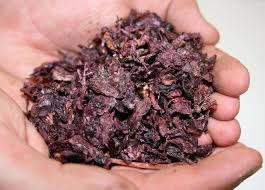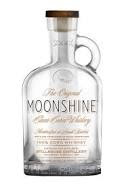BRANDY
The spirit distilled from any other fruit other than grapes are fruit brandies and must be named after the fruit combined with the name ‘brandy’; e.g. Cherry Brandy, Peach Brandy, Apricot Brandy. These fruit brandies are classified as eaux-de-vie (water of life) and also known as alcools blanc (Alcohol white).
ORIGIN
Distillation of wine started in the
16th century. Probably at
How Brandy is made:
The following steps are used in Cognac Manufacturing:
PRODUCTION
OF
Grapes
pressed twice; pips & stalks are not crushed (for less tannin)
â
The wine produced is fruity, thin, harsh, slightly acid and unpleasant (8% to 10%
al v/v)
â
Fermentation
takes up to 10 days
â
Passed
through settling bins (Racking)
â
Distilled
in alembic = 30% al v/v (‘brouillis”)
â
Distilled
again in alembic = 70% al v/v (la bonne chauffe)
â
Aged
in Limousine oak (rich in tannin)
â
=
amber tone, delicate and mellow with
a
natural bouquet of grapes
â
Coupage
(Blending)
â
Dilution
with distilled water
â
Colour
adjustment with caramel
â
Packaging
Almost every country has its own
national brandy, many of which are not made from wine:
Grappa in Italy is made from grape skins
Slivovitz in Poland is made from plums
Shochu in Japan is made from rice
It is universally acknowledged that The finest brandies are the French cognacs that are distilled from wine.
Regardless of where brandy was originally distilled France was the first country to produce brandy for widespread commercial use. Brandy is made all over France, but the country is noted for two examples.
COGNAC – Cognac is the most renowned brandy of the world
ARMAGNAC – Armagnac is the oldest brandy of the world To this date, they remain the benchmark of all brandies no matter where they are produced.
Cognac is defined as the brandy produced from the Charente and Charente Maritime department of West Central France comprising roughly an areas of 2,50,000 acres enclosing the city of Cognac squarely in between which lends its name to the brandy produced in the region. So from the above-mentioned definition it can very well be understood that all Cognacs are brandy but not all brandies are Cognac.
THE GROWING AREAS OF COGNAC
The growing areas of the Cognac region is subdivided into six zones based mainly on oil and climatic factors. They are as follows:
Grand Champagne – (Large meadow) Covers around 14% of the entire Cognac district
Petit Champagne – (Small Meadow) Covers around 14.7% of the entire Cognac district. Jarnac is the best-known city.
Borderies (Edges) -Considered as equal to Petit Champagne in quality and covers around 4.7% of the entire Cognac region. Burie is the most important city in the area. The best firms generally use the grape grown in these regions. Sometimes the grape grown in Fins Bois region is also used.
Fins Bois - (Fine woods) Constitutes 35.5% of the area
Bons Bois – (Ordinary woods and Earth woods) Constitutes 6% of the area. The word Champagne has got nothing to do with the celebrated sparkling wine of France. It has originated from the word. Champ which means field.
Bois Ordinairies-Part of this area is a coastal area and the soil is sandy. It produces harsh Cognac suitable for a cheap blend.
GRAPES
Eight different varieties of grapes are allowed by the Law to be used for the manufacture of Cognac. Only three varieties are in cultivation They are Saint Emilion:- This is a thick-skinned, sturdy grape which produces a rather sour tasting wine.
Now some of the total yields for Cognac is this grape.
St Emilion(Ugni blanc)-It is the best grape that gives a good yield.
Folle Blanche - Very thin-skinned grape, prone to many diseases, and yields a very high acid wine.
Colombard - It is sensitive to oidium and needs heavy sulfuring. It also produces a very harsh wine with high alcohol content.
TYPES
OF
· Grand
· Petite
· Fine
GRADATION
OF
Ø The
Alphabet System
Ø The
Star System
Ø Some
Legal Terms
v ALPHABET
SYSTEM
·
C - cognac
·
E - especial
·
F - fine
·
V - very
·
S - superior
·
P - pale
·
O - old
·
X - extra
ALPHABET
& STAR SYSTEM
· C
·
VS or *** - Very Special demand a
minimum age of 3 years.
·
Reserve / VO / VSOP - Youngest brandy
in the blend to be at least 4 ½ years.
·
Extra/ Napoleon - Youngest brandy in
the blend to be 6 years.
Cognac Label:
ARMAGNAC
Armagnac Known as the “Brandy of Musketeers” Armagnac is produced from the Department of Gers , which is situated 113 kms to the southeast of Bordeaux. This delimited area is present in the heart of southwestern France, a part of which was once the ancient province of Gascony. History Armagnac is probably the oldest known wine spirit in the world but the art of distillation was introduced by the Arabs between 1411 and 1441. In the department of France known as the Landes, they produced an agua ardente, or firewater, which was used initially as a therapeutic cure
The most commonly used grapes for the production of Armagnac are:
1. Folle Blanche- also called as the Picquepoult
2. Baco A22- Originated from a cross between Folle Blanche and Noah variety.
3. Colombard- Some growers prefer this grape variety.
These grapes are grown in three sub-regions. They are:
1. Bas Armagnac
2. Haut Armagnac
3. Tenareze
Only Bas Armagnac and Tenarez produce quality brandy.
The white wines which are distilled to make the brand come from completely natural fermentation and no additives are added. Normally the grapes are fermented and distilled within eight weeks of harvest.
Production of Armagnac
Winemaking: The main grape varieties used in the production of Armagnac are Saint-Émilion (Ugni Blanc), Folle Blanche, Colombard, and Baco Blanc (Baco A22) The ‘must’ of approved grapes is allowed to ferment naturally without the addition of yeast for 7-10 days which result in dry and high acidic wine with a low alcoholic content of 8-10 percent
Distillation: It is distilled in ‘continuous still’. Now, Armagnac is permitted to use Cognac Pot still ( Charente)
Aging and Blending: The young Armagnac is matured in ‘Monlezun’ oak casks. The addition of caramel or sugar is not permitted in Armagnac production.
Bottling: Most Armagnac is sold in a flat bottle called in French as basquaise ( In English referred to as Flagon shaped bottles)
Difference between Cognac and Armagnac:
1. Cognac undergoes two separate distillations in pot stills whereas Armagnac is produced by a single distillation in the alembic armagnacais which is a unique version of the patent still.
2. Cognac comes out of the still at a maximum alcoholic strength of 72 degrees GL whereas Armagnac comes out of the still between 52 to 55 degrees GL.
3. Cognac is matured in wooden casks made from the limousine oak or troncais oak whereas Armagnac is aged in wooden casks made from the Black veined oak of Gascony or Monlezun oak.
4. The minimum legal period of aging in the case of Cognac is 2 years whereas Armagnac remains in the cask for a minimum period of 12 years.
5. Caramel addition is permitted in Cognac, but not in Armagnac.
Special Note on Aging:
Effective from 1 April 2018, it means that 10 years is now the minimum age of the youngest eau-de-vie in an Armagnac blend marked XO.
Producers with XO Armagnac with a stated minimum of six years will be allowed to be sold until stocks last, however, any XO bottle from 1 April must follow the new age guidelines.
Further reading suggested:
https://www.thedrinksbusiness.com/2018/04/armagnac-xo-age-requirement-increased-to-10-years/
SERVICE –
Brandy is generally served in a brandy balloon or a brandy snifter. V.S.O.P and above Cognacs are generally served as after-dinner digestives like a liqueur. Hence these Cognacs which are served as liqueur are called liqueur brandy but brandy liqueur is a liqueur with brandy as the base. Lesser categories of Cognacs can be served as High ball with soda and ice.
The best way to serve Cognac is to serve it as a liqueur after dinner.
Note: Fine Maison is a cheap quality brandy which is generally served as a house brandy when the order is given by the guest without specifying the brand.




















